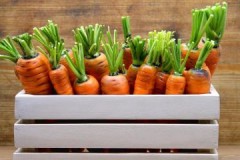Rules and options for how and what to store carrots on the balcony
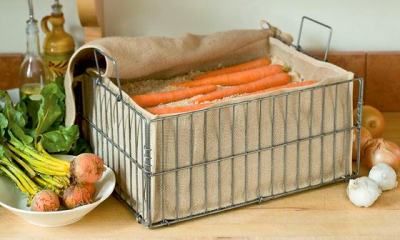 Storing carrots is a headache for many gardeners who do not have a cellar.
Storing carrots is a headache for many gardeners who do not have a cellar.
It will not be possible to leave the crop in the apartment, since the warm air will lead to its rapid deterioration. In this case, the loggia comes to the rescue.
About whether it is possible and how to store carrots at home on the balcony in autumn and winter, so that it does not rot, read the article.
Content
Is it possible in the fall and winter?
 Carrots are sensitive to temperature and humidity. Therefore, choosing a balcony for storing it, you need to create conditions in which it will not freeze, overheat and dry.
Carrots are sensitive to temperature and humidity. Therefore, choosing a balcony for storing it, you need to create conditions in which it will not freeze, overheat and dry.
In autumn, root vegetables can be stored on an open balcony. In this case, you need to monitor the weather..
If the temperature at night begins to drop below zero, it is necessary to take additional measures aimed at warming the crop. On the open balcony, fresh carrots can remain until frost.
On the glassed-in loggia, the crop can be left to winter, but only on condition that the temperature on it does not drop below -3 degrees.
Conditions for successful storage
The main condition for the successful storage of the crop is maintaining air temperature in the range from 0 to +2 degrees. Minor deviations from the norm are acceptable.
Be sure to pay attention to air humidity. Its optimal indicator is 85-90%.
You need to choose a place where direct sunlight does not penetrate... Carrots love the dark. Ultraviolet light promotes the destruction of carotene in vegetables and leads to their rapid deterioration. Vegetables that lie in the sun turn green and acquire a bitter taste.
If all conditions are met, the crop will remain edible for 9 months.
Preparing vegetables
Before sending the crop for storage, it must be properly prepared. Actions to be taken:
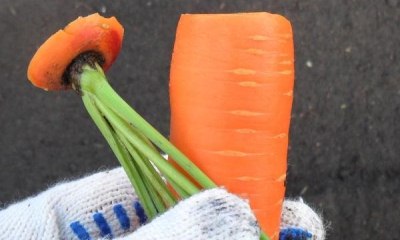 Dig vegetables from the soil, cut off the tops from them, leaving a small bunch, no more than 1 cm long.
Dig vegetables from the soil, cut off the tops from them, leaving a small bunch, no more than 1 cm long.- Lay out the crop to dry in the fresh air for a day.
- Bring vegetables into the apartment, cut off the heads (by 3 mm) and remove the tails.
- Remove damaged and diseased specimens. Roots with deep cracks are not suitable for long-term storage.
- Leave the vegetables in a cool, dark place, such as a pantry, for 10-12 days. During this time, all diseased fruits will manifest themselves. They need to be removed.
- The final sorting of the crop is carried out. Medium-sized vegetables are brought out onto the balcony, healthy, firm, even and smooth.
The ways
There are several ways to store crops on the balcony. Carrots are poured with clay, covered with sand, laid out in jars and plastic bags. Each method has its own characteristics that allow you to extend the shelf life of a vegetable crop.
In sawdust
Sawdust of coniferous trees is used to store the crop. They contain natural essential oils and resins that inhibit the growth of microbes. Vegetables can be stored in sawdust until warm.
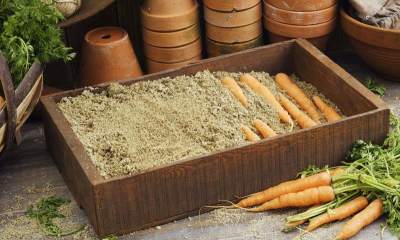 Procedure:
Procedure:
- clean and dry the wooden box, cover its bottom with a layer of sawdust 2 cm thick;
- lay the carrots in a row, preventing them from touching each other;
- cover vegetables with sawdust so that they are not visible;
- lay out a new layer of carrots and sprinkle them with sawdust again.
The procedure is repeated until the box is full. From above it is covered with warm breathable material, for example, an old sweatshirt.
In clay
To implement this method you will need:
- boxes without gaps;
- clay;
- water;
- cling film.
Procedure:
- Prepare a solution based on clay and water. They are mixed until the mass becomes homogeneous. By its consistency, it should resemble village sour cream. If the clay is liquid, it is left to thicken for several days.
- Line the bottom of the box with cling film.
- Arrange the carrots so that they do not come into contact with each other.
- Pour clay over vegetables and let it dry.
- A new layer is laid on top of the first layer. The procedure is repeated until the container is full.
- The top of the box is covered with a blanket or old jackets.
In sand
Sand is an excellent material for keeping your storage container at optimum humidity and temperature. It acts as an insulator, separating each vegetable from each other.
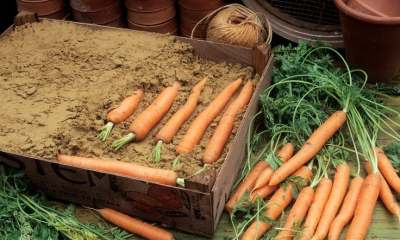 Procedure:
Procedure:
- Pour sand on the bottom of the box.
- Spread the carrots on it so that the roots do not touch each other. It is sufficient to maintain an interval of 20 mm.
- Cover the layer with sand.
- Put a new row of carrots on top of it.
The procedure is repeated until the box is full to the top. So that microbes do not multiply in the container and mold does not appear, sand can be mixed with wood ash. In such conditions, carrots will lie for at least 8 months.
In moss
Moss helps to create optimal conditions for storing vegetables. It maintains the required level of moisture, prevents heat loss and root crops freezing. I use sphagnum moss to fill the box.
Procedure:
- the bottom of the box is laid out with moss;
- put carrots on top of it;
- layers alternate until the container is full.
To reduce the risk of spoilage of the crop, vegetables are spread at a short distance from each other. Additional disinfection of the material is not required.
In onion skins
Onion peel is a natural antiseptic that prevents crop spoilage. It contains essential oils that help destroy mold and microbes.
 Procedure:
Procedure:
- cover the bottom of the box with husks;
- put a layer of carrots on it;
- sprinkle vegetables with husks and lay out a new layer.
When the container is full, cover it with a thick cloth.For storing carrots, only dried husks are used. You can disinfect it in the sun.
In pans
You can use enamel pans to store vegetables. The main condition is the absence of chips and rust on them. Vegetables can be stored in a saucepan for 3-4 months.
Procedure:
- Wash and dry pots.
- Fold the carrots in layers, or arrange them vertically.
- Cover vegetables with a clean paper towel and close the lid.
This method is applicable if there are pots of suitable size in the house. Unlike boxes, a lot of carrots cannot be placed in such a container.
In plastic bags
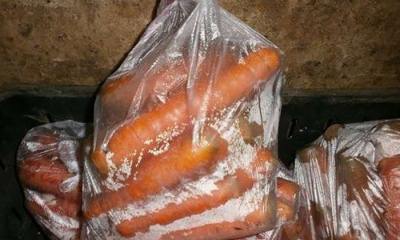 To store carrots, you need to choose dense dark bags that will obstruct the access of sunlight.
To store carrots, you need to choose dense dark bags that will obstruct the access of sunlight.
Procedure:
- put carrots cleaned of sand and dirt in bags;
- tie bags and make several small holes in them for fresh air;
- remove the bags on a cool loggia; you cannot leave them in a warm room.
In bags, the harvest can lie up to 4 months. Vegetables will emit carbon dioxide, which prevents them from spoiling.
Read more about this storage method. here.
In banks
This is a very convenient way of storing if the fruits are small in size and can easily fit into glass jars.
Procedure:
- Wash and dry the jars.
- Put vegetables in them. You need to try to keep a distance between them, which is filled with sawdust.
- Close the cans with metal or nylon lids.
The best varieties for home storage
For storage on the balcony, you need to choose those varieties that are characterized by increased keeping quality. These can be mid-ripening and late-ripening vegetables that are resistant to disease and low temperatures.
These varieties include:
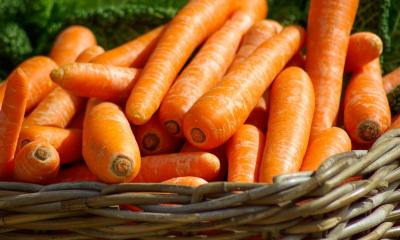 Autumn queen... A late-ripening variety that is harvested 120 days after germination. These seeds were bred by Russian breeders taking into account the harsh weather conditions prevailing in the country.
Autumn queen... A late-ripening variety that is harvested 120 days after germination. These seeds were bred by Russian breeders taking into account the harsh weather conditions prevailing in the country.- Flaccoro. A Dutch variety that, under optimal conditions, will be stored until warm.
- Samson. The cultivar has excellent disease resistance. Fruits are even, large, not prone to cracking. You can store Samson carrots on the balcony until mid-spring.
Possible problems and how to fix them
Even if all the rules are followed, the carrots on the balcony can start to deteriorate. The problem that occurs must be eliminated immediately by taking the following measures:
- Vegetables freeze... If the air temperature drops below -2 degrees, the container must be insulated with felt. During severe frosts, boxes with vegetables can be brought into the apartment. To keep them from getting too hot, you can leave them at the balcony door. As soon as the temperature returns to normal, the containers are returned back.
- The crop sprouts... In this case, re-trimming is required. The tops can break through if a growing point has been left on the head.
- Mold has appeared in the boxes... Rotten fruits must be removed, and unaffected specimens must be sprinkled with wood ash mixed with sand.
- The carrots began to wither... This is due to the low humidity level. You can increase it by covering the boxes with a thick cloth.
Helpful information
To keep the carrots on the balcony as long as possible and not spoil, the following tips should be taken into account:
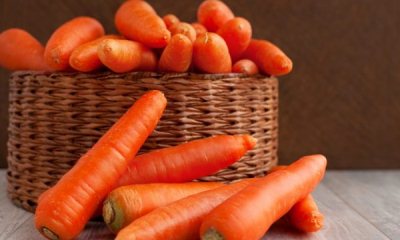 It is better to store medium-sized fruits for storage. Large and small specimens are used first.
It is better to store medium-sized fruits for storage. Large and small specimens are used first.- If 2-3 different varieties have been grown, then they need to be stored separately from each other.
- It is not recommended to wash root vegetables. Vegetables have a natural bloom that protects them from rapid deterioration. Removing it reduces the plant's immunity.
- Carrots are trimmed with a sharp knife on a flat surface.Tearing off the tops manually is not allowed.
- If the carrots are slightly damaged during harvesting, then they should not be thrown away. It is enough to leave her in the apartment for a day. During this time, small defects will heal.
- Vegetables should be checked periodically for mold and rot.
Conclusion
A balcony is the best alternative to a cellar. It can be used to store carrots if the conditions are right. The main parameter is the air temperature in the range from 0 to +2 degrees.
You can choose any container for storing vegetables:
- boxes,
- packages,
- banks,
- pots.
The harvest remains fresh for the longest time in:
- sawdust,
- in clay,
- in sand.

